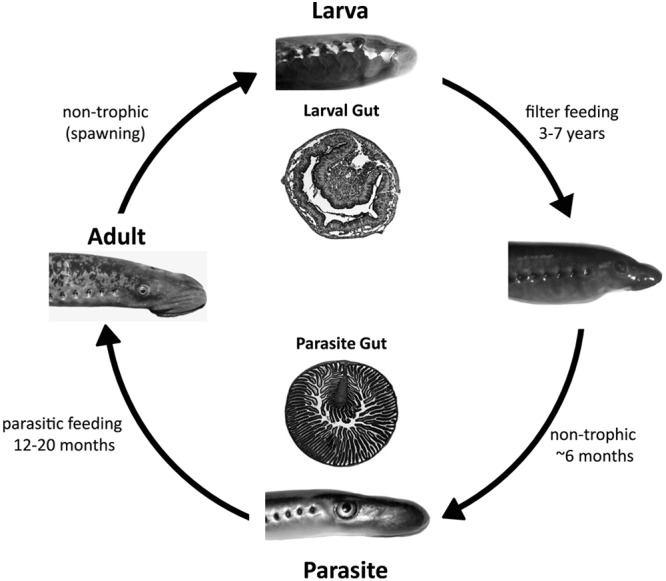Fig 1.

Life cycle of the sea lamprey. Adult sea lamprey spawn in the river headwaters. Embryogenesis lasts approximately 17 days, and larval lamprey hatch, float downstream, and burrow in the sandy river bed, where they remain as relatively sedentary filter feeders for 3 to 7 years. The end of the larval period is marked with a metamorphosis, which involves major morphological and physiological changes to all organ systems. Metamorphosis is a nontrophic period which lasts approximately 6 months. Postmetamorphic juveniles (parasites) migrate downstream to a large body of water (a lake or the Atlantic Ocean) and commence parasitic feeding on the blood and body fluids of boney fishes. The parasitic feeding phase lasts 12 to 20 months, after which juveniles commence upstream migration, sexually mature into adults, spawn, and die. The cross sections of the larval and parasite intestines depicted in the figure highlight the dramatic morphological changes that occur during metamorphosis.
